Around the County
Dave+Apollo=animal attraction
February 28, 2013
This really is a bird of another feather.
For starters, she’s got a masculine name—Apollo. But that’s nothing compared to this: She’s got a serious turkey vulture crush on a bearded, soft-spoken Los Angeles County worker named Dave Stives.
Stives, the county’s regional animal keeper, has become accustomed to Apollo working herself into a hormonal tizzy when he nears her enclosure at the Placerita Canyon Nature Center in the Antelope Valley, especially during spring mating season. Among other things, she spins in circles and flaunts her tale. “A courtship dance,” says Stives.
Apollo and Stives first met nearly a decade ago. Apollo had been hit by a vehicle in Virginia and was shipped west for treatment at a private facility in the Antelope Valley. A tendon in Apollo’s wing had been damaged, thus bringing her flying days to an end. In those early days, Stives had helped in her care and training. Two years later, when the private facility went under, Apollo was moved to the county’s Placerita Canyon center. It was love at second sight.
“She remembered me and trusted me,” Stives says. That was seven years ago, he says, and the relationship is still going strong. “She follows me around like a puppy dog,” Stives says affectionately of the black-feathered, red-headed vulture.
Stives, 48, has worked as an animal keeper for the county’s Department of Parks and Recreation for some 14 years. He’s responsible for the seven nature centers and parks that house a menagerie of animals, including birds, possums, raccoons, rattlesnakes—“probably anything that is indigenous in the state,” he says. He travels from one facility to the next making sure all are in compliance with state and federal laws governing everything from the diet of the animals to their educational use, a requirement for the county to keep them. “We make sure they have the best possible life under our care,” Stives says.
At home, Stives also has some feathered and furry friends—two dogs, two cats, three falcons, plus a snake. As a “master falconer,” he takes his birds into the wild, where he’s “conditioned” them to circle overhead as he beats the bushes for rabbits. The falcons then swoop in.
As for Apollo, she now spends her weekends with Stives at educational animal shows, dispelling myths of vultures as the creepy outcasts of the bird world. “She’s actually quite pretty,” he says. “In her own way.”
To see the two in their native habitat, click on the video above.
Posted 2/28/13
Attention thrift store shoppers
February 27, 2013
You don’t need to be a hip-hop enthusiast to go out and “pop some tags” at the thrift shop. And thanks to the L.A. County Board of Supervisors, that vintage velour jumpsuit and those used house slippers may be closer than you think.
The supervisors on Tuesday eased zoning restrictions on secondhand stores in unincorporated Los Angeles County, making it easier for nonprofits such as Goodwill Industries and the Salvation Army to set up shop in neighborhood business districts.
The county code revision, which expands the commercial areas in which vintage stores can do business, was proposed last year by Supervisor Don Knabe after a request from Goodwill, but represented a long-overdue updating of the zoning code, says Bruce Durbin, supervising regional planner in the Department of Regional Planning’s ordinance studies section.
“Essentially, secondhand stores had been in the same zoning category as recycling yards and pawnshops,” says Durbin, noting that such stores weren’t even classified in the zoning code until the Great Depression. “The idea was that they had the same impact as, say, a place that sold scrap metal.”
But secondhand stores since then have become more like other retail outlets, he says. Indeed, the No. 1 song in the country right now is Macklemore & Ryan Lewis’ bawdy anthem, “Thrift Shop,” in which the singers vow to shop ‘til they drop—or “pop some tags”—even though they only have $20 in their pockets.
“These days, thrift shops operate like, say, a Marshall’s—they receive bulk materials, sort it, price it and put it in a showroom. So this was a matter of the zoning catching up with the use.”
The amendment allows secondhand retail stores to open in so-called C-2 zones, as long as the lot isn’t residential and all the drop-off, storage and sorting is done indoors during business hours.
At least one city expressed concern that the change might cheapen municipal shopping districts that border on unincorporated county areas. San Marino noted in a letter that thrift shops could theoretically set up shop across San Gabriel Boulevard from the upscale community, which only allows the sale of new goods.
Nonprofits, however, supported the measure, with letters and testimony from the Salvation Army, the St. Vincent de Paul Society and the AIDS Healthcare Foundation, which operates the popular Out of the Closet thrift shops.
“This ordinance is going to be great,” says Michael Pauls, a Long Beach-based land use consultant to Goodwill who predicts that it will enable the nonprofit to add as many as a half-dozen new outlets over the next two years to the 40 or so stores it now operates countywide.
Since the recession, he says, Goodwill has been trying to expand its offerings of household goods and used clothing; it also has sought to respond to a massive influx of used book donations by opening a new tier of Goodwill bookstores. But when zoning prevented the nonprofit from moving on a series of retail vacancies in unincorporated commercial areas near Santa Fe Springs, Pasadena and Hacienda Heights, Goodwill sought relief from the county.
“In the last 20 years, thrift stores have become very popular with the shopping public,” Pauls says, noting that secondhand stores not only offer low-cost shopping, but also divert used goods from landfills and, in many cases, provide jobs and job-training programs.
“We’re no longer the rummage sales or ‘Sanford and Son’ image that people often equate with us.”
Posted 2/27/13
A new Rx for our shelter pets
January 31, 2013

These lucky dogs were adopted from L.A. County shelters, where hopes are high because of a new grant.
An injured eye shouldn’t be a death sentence. And yet, such minor medical problems often lead to euthanasia for dogs and cats in animal shelters.
Dr. Maria Sabio-Solacito has been treating animals for 20 years, five of them as head veterinarian for Los Angeles County’s Department of Animal Care and Control. She says she’s seen far too many animals put down when some basic medical treatment could have made them more adoptable.
“Before, the idea was just to grab all the stray dogs and, if no one takes them, euthanize,” said Sabio-Solacito. “Now, we are much more focused on animal care.”
Giving that effort a big boost, the Board of Supervisors on Tuesday approved a $50,000 grant to enhance medical-care capabilities at the county’s six regional shelters, or “animal care centers.”
Limited resources have been the primary challenge for the county’s shelter system, the nation’s largest. Each year, the county is forced to euthanize thousands of cats and dogs. Between July 2011 and June 2012, the agency killed 24,605 cats and 17,745 dogs. (But it also was successful in getting 7,387 cats and 26,942 dogs into adoptive homes or reunited with owners during that period.)
The grant was given to the L.A. County Animal Care Foundation by the American Society for the Prevention of Cruelty to Animals. The foundation is a nonprofit organization that raises funds for the Department of Animal Care and Control and supports spay and neuter programs, pet adoptions, public education and other animal welfare activities in the region.
With the money, the county will purchase eye surgery, dental and blood-testing equipment—resources Sabio-Solacito and her colleagues identified as the most needed and most likely to make the biggest impact. The agency currently contracts with local clinics for those services, an expensive practice that limits how many animals it can treat.
The equipment will enable staff to perform minor surgeries, dental cleanings and offer other vital treatments to sick and injured animals. Eye and dental conditions are highly common in shelters and can lead to serious secondary infections. Shelter officials are optimistic that the new medical services will lead to more adoptions and fewer deaths.
“A lot of animals don’t get adopted just because they have bad teeth,” said Sabio-Solacito. “It’s just because they have been neglected.”
Appearances matter for pups and felines seeking new homes, said Evelina Villa, spokesperson for the county agency. Potential owners shy away from pets with unattractive problems that could require treatment.
“The breath is a big thing too,” she laughed.
For more serious injuries, the Animal Care Foundation funds a program called “Dreams Come True.” Using donations and reduced-rate services from local veterinary schools, even some of the toughest cases of injury or abuse can be treated.
“A huge portion of the animals that come into the shelter were hit by cars,” said Sabio-Solacito. “We used to euthanize. Now we can do surgery or amputations.”
Sabio-Solacito hopes to someday obtain enough funding for a full-service animal medical center, which she’d call “The Second Chance Hospital.” For now, however, she says she’s thrilled with the improvements that are on the way.
“Every little bit of help that we get to properly diagnose and treat conditions makes a huge impact.”
Posted 1/31/13
Everyone should count
January 24, 2013
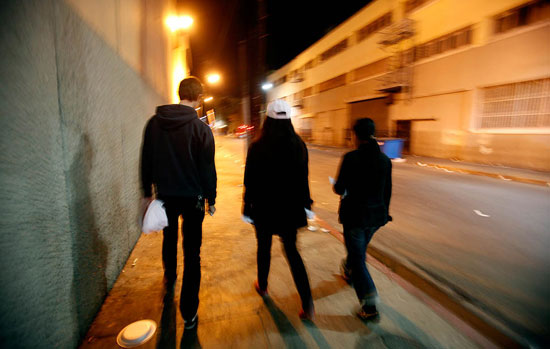
Homeless Count organizers are hoping for an even bigger volunteer turnout than in 2011. Photo/L.A. Times.
For Los Angeles to effectively confront the shame of homelessness, it needs a clear picture of the problem. And the 2013 Greater Los Angeles Homeless Count—the largest of its kind in the country—is preparing to undertake its most ambitious effort yet to bring the issue into sharper focus—hopefully, with your help.
“We have three thousand volunteers so far, and we’re trying to get to five thousand,” said Mark Silverbush, policy and planning analyst for the Los Angeles Homeless Services Authority, which organizes the count and coordinates regional efforts to assist the homeless. “We will have more data available than ever before.”
Silverbush said that more than 70 cities and 20 communities are joining the effort
Volunteers aged 18 and older can sign up online to participate in the count throughout L.A. County, except in the cities of Glendale, Pasadena and Long Beach, which are doing their own independent tallies. By car and by foot, teams of 3 or 4 counters will fan out to assigned areas to count homeless individuals, as well as tents and vehicles in which people appear to be sleeping. Friends can group together. The process takes about 4 to 5 hours, including the pre-count training.
Most counts take place at night when people are bedding down, which makes it easier to identify who is homeless, Silverbush said. Volunteers are instructed to keep a respectful distance and not engage the homeless population.
Homeless counts are required by the U.S. Department of Housing and Urban Development. The collected information is required to obtain federal monies to combat homelessness and is used to apply for other government funding.
“There are a lot of agencies and organizations and we all have anecdotes about the work we are doing, but it really helps to have these statistics,” Silverbush explained. “This is our once-in-every-two-years opportunity to refresh that data and make a difference in people’s lives.”
The count will take place during the course of three days. On Tuesday, January 29, volunteers will count in the San Gabriel Valley and East L.A. On Wednesday, January 30, they’ll head to West L.A. and the South Bay region. Finally, on Thursday, January 31, counters will canvass the Antelope Valley during the day and then, at night, move to the San Fernando Valley, Santa Clarita Valley, Downtown L.A. and South L.A.
This week, agencies that focus on youth homelessness undertook a countywide count of unaccompanied minors and transition-aged homeless youth between 18 and 24. Agency staffers recruited homeless and formerly homeless youths to help identify young people living on the streets. They also sought information about the population’s sexuality and how many came from foster care.
“The housing barriers that homeless youth face seem to be different,” Silverbush said. “We are looking at the research to figure out what the best interventions are. There are a lot of ideas out there, but not a lot of off-the-shelf ideas that we can really plug in and use.”
In February, advocates plan to undertake a separate survey of the adult population to collect further demographic data. They’ll use a matrix developed for the “housing first” program Project 50 to identify the most vulnerable homeless individuals, or those most likely to die on the streets.
Lights out for L.A. Christmas trees
January 3, 2013
The end of the holidays can be such a grind.
Particularly for the hundreds of thousands of Los Angeles County Christmas trees being chopped up, ground down or otherwise looking for a new line of work in the days and weeks ahead.
Yes, it’s the most resolution-making time of the year, and prominent among all the do-good messaging is the mantra to go green by recycling that tree. The city of L.A. is touting the fire safety benefits along with the environmental upside, while the county is promoting convenient curbside pickup to have ol’ tannenbaum transformed into “compost, mulch, or ground cover.” But the reality of L.A. Christmas trees’ final chapter is a little more complicated than it might seem, with different approaches in place in the county’s various communities and plenty of ground up trees ending up covering a variety of sins in local landfills as “alternative daily cover.”
Sure, some of these former glitter kings of the living room go on to a bucolic-sounding afterlife. The 100,000 or so trees picked up by the city of Los Angeles’ Bureau of Sanitation, for example, are made into mulch and used as ground cover here or sent to farms in Kern and Ventura counties. (Residents can pick up a free bag year-round at any of the locations on this city map.) Santa Monica’s Christmas trees—some 25 tons of them—are chipped at local parks and pressed into landscaping duty around town; the 2011 crop is now serving as mulch at the Santa Monica Airport.
In Avalon, teams of fourth-graders, guided by the Catalina Island Conservancy, recycle several hundred trees each year by placing them in gullies where they provide natural erosion control. First, the kids strip off all the tinsel and other “unnatural parts” like ornaments or tree stands, then work together to move the trees to gullies where they’ll hold soil in place and make it possible for new plants to grow.
Other Christmas trees—some 386,235 last year—are off on a whole different kind of sleigh ride. These trees, from unincorporated communities and about 80 cities throughout the county, are picked up by trash haulers and trucked to local landfills, where they’re ground up to become “alternative daily cover”—the stuff they put over the trash every night to keep things tidy and reduce odors. It may not be the most glamorous job on the Christmas tree lot, but somebody’s gotta do it—and county officials say it’s a beneficial form of recycling permitted under state law.
Under the program, trash haulers from participating cities drop off the Christmas trees at the landfills free of charge.
“I personally believe alternative daily cover is a great market for this material. It’s a pretty great use in these urban markets, rather than hauling it away” to be converted into compost at a faraway facility, says Nick Morell, recycling coordinator for the county Sanitation Districts. He said the ground-up Christmas trees take the place of dirt that would otherwise have to be trucked in and used as cover.
The recycled Christmas tree cover also lessens smells, prevents fires, reduces dust and “keeps critters away,” says Pat Proano, assistant deputy director of the environmental programs division for the county’s Department of Public Works.
While composting would be a “preferred option” for retired Christmas trees, Proano says, there’s not enough of a local agricultural market for all that would be produced in a county the size of Los Angeles. “We’re not farmers,” he says. “The quantities are huge.”
Still, Proano says, this year’s planned closure of the county’s Puente Hills landfill, the nation’s largest, will require some rethinking of how the county recycles its Christmas trees before the next holiday season rolls around.
As things stand now, Proano says, most residents are “probably not” aware of where their Noble fir or Scotch pine will end up after their trash hauler picks it up curbside.
“They’re just probably glad to have the service,” he says. (To check out what’s going on in your community, click here for a list of contact numbers and websites. Please note that different cities have different requirements—Los Angeles asks that residents cut their trees into pieces small enough to fit into their green yard waste bins, for instance, whereas Santa Monica requests that trees be kept out of the bin and dropped off at parks. No matter when you live, tinsel must be removed along with decorations and tree stands before pick-up, and flocked trees are generally frowned upon.)
Getting the inside story of what actually happens to the family fir after it’s left at the curb can be a bit traumatic, as a group of Long Beach students learned last year.
“They were totally disillusioned,” recalls Lisa Harris, the city’s top recycling specialist. She says the Rogers Middle School students had wanted to research the happy hereafter of Christmas trees. “They were hoping the trees were going to be turned into a buttery compost”—not pressed into service for “alternative beneficial use” in landfills.
However or wherever a real Christmas tree meets its end, it’s a good environmental outcome, in the view of Rick Dungey, public relations manager for the National Christmas Tree Association.
“There are so many things you can do with it because it’s a plant,” he says. (For instance, discarded Christmas trees in Riverside County are being placed in Lake Elsinore to create fish habitat.)
Dungey’s no fan of the faux tree, which he terms “a giant green toilet brush” that’s destined for a non-biodegradable future in a landfill someday.
His organization estimates that 30.8 million real Christmas trees were sold in the United States in 2011, along with 9.5 million artificial trees. They don’t do regional breakdowns, but that translates roughly to one real tree for every ten residents.
Already looking ahead to next year? Sunset magazine’s take on the pros and cons of real and artificial trees is here. And—just as reusable bags have offered a way around the eternal paper vs. plastic debate at the grocery checkout—there could be a third holiday decorating option to consider come next December: rented live Christmas trees, for those who can’t bear to send their evergreen to the great beyond.
Posted 1/3/13
That’s the spirit!
December 13, 2012
For some kids, the holidays rarely mean a haul of presents, regardless of whether they’ve been naughty or nice. Organizations across Los Angeles County are holding annual toy drives to help level the playing field for the region’s underserved, sick and homeless children. Here are just a few organizations that are currently seeking donations of new, unwrapped toys to spread holiday cheer.
For 20 years now, Southern California Firefighters have spearheaded “Spark of Love,” a drive that has collected more than 7 million toys for underserved children and teens in the region. Drop off toys and sports equipment at your local fire station or CVS Pharmacy. You can also donate online, and your full contribution will go to toys.
Maybe it’s something about wearing a uniform that makes people want to hand out toys each winter, because the Los Angeles Police Department also holds annual toy drives. Locally, you can donate to the Devonshire Police Activity League Supporters in Northridge. The deadline for donation is Friday, December 14, or you can volunteer at the giveaway on December 15 at 9 a.m. Call 818-885-6432 for details.
Friday, December 14, is also the last day to donate to Children’s Hospital. Call 323-361-8397 for a drop off location.
Children’s Action Network is doing its first ever toy roundup this year with “SantaCAN,” which aims to give kids in Los Angeles County foster homes a holiday to remember. Until December 20, donors can purchase gifts from their online registry. The gifts are taken from wish lists made by the children, so you’ll see what you’re buying and the first name and age of the child who chose it.
The Hollywood Sunset Free Clinic and The Toy Drive for Children are holding their 30th Annual Holiday Toy Drive. This year’s theme is reducing childhood obesity, so they are encouraging gifts that encourage exercise, like basketballs and soccer balls, for underserved children in the community.
And don’t let the calendar dictate your season of giving. You can donate year-round to Los Angeles County’s Toy Loan Program. Sponsored by the Board of Supervisors and the Department of Public Social Services, this program allows children to borrow toys from a Toy Loan Center in much the same way they would check out a library book. Click here for the details.
Beetle mania hits SoCal trees
December 6, 2012
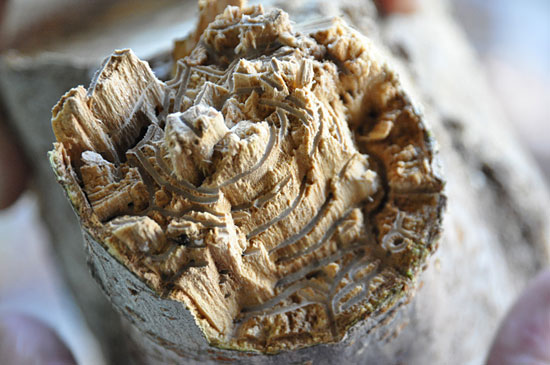
A box elder at Huntington Botanical Gardens shows damage from a voracious new beetle. Photo/Maxx Echt
No one is certain how it got here. The best guess is that it stowed away on a Southeast Asian shipping crate. The first local sighting appears to have been in 2003 at Whittier Narrows. By 2010, it was suspected of killing box elders in Long Beach.
By 2011, it had infested the first of hundreds of trees at the Los Angeles County Arboretum and Botanic Garden in Arcadia and the Huntington Botanical Gardens in San Marino. By the spring of 2012, alerts were being issued throughout the avocado industry.
Now, scientists are warning that a new species of beetle, tinier than a sesame seed but devastating as poison, has gained a foothold in Southern California, threatening scores of tree species, including the native California sycamore and the iconic coast live oak.
“This has been like something out of a science fiction novel,” says Tim Thibault, the Huntington’s curator of woody collections. Thibault says the bug initially was assumed to be an exotic pest called the “tea shot hole borer” that afflicts tea plants in Asia. But when it turned up on more than 100 species, killing some in less than two years, DNA tests revealed that both it and a lethal fungus it carries were new to science.
“It’s been named the polyphagous shot hole borer,” he says. “That’s because the word ‘polyphagous’ means it ‘eats everything’.”
“This is a very big issue for the county at large, and it needs to be coordinated at a high level,” says Brian Sullivan, director of horticulture at Descanso Gardens. “This bug isn’t worrying about what city it’s in.”
So far, scientists say, the new beetle has been found throughout Los Angeles and northern Orange Counties, as far south as Laguna Beach, as far north as Azusa, as far east as Pomona and as far west as Los Angeles International Airport, where it has infested a stand of coral trees.
Whether it has spread to wildlands such as the Santa Monica Mountains is as yet uncertain, but researchers are hoping a January 12 symposium at the Huntington for arborists, gardeners and homeowners will help track the infestation.
“We’re hoping we’ll get a bunch of people out there who’ll look at trees in their parks and neighborhoods and help serve as an early warning system,” says Rosi Dagit, senior biologist at the Santa Monica Mountains Resource Conservation District. (For more information on the symposium, organized by the RCD, the Huntington, the Los Angeles County Department of Agricultural Commissioner and the University of California Division of Agriculture and Natural Resources, click here.)
Akif Eskalen, a UC Riverside plant pathologist who has led the research into the new beetle, says that it probably has been hanging around Southern California for about a decade, unnoticed or misidentified. The discovery of even one new species, let alone two, is highly unlikely; Eskalen, a specialist at the UC Agriculture and Natural Resources/UC Cooperative Extension, says he stumbled on the new beetle and fungus “totally by chance” nine months ago when a desperate homeowner contacted him online for help with a backyard avocado tree that was mysteriously but rapidly dying.
Curious, Eskalen drove two hours to the woman’s home in South Gate. He says he could tell right away that the discolored wood, tiny round holes and powdery white spots were a sign of something unusual.
In his lab on the Riverside campus, he confirmed that the tree was under attack from a variety of the Fusarium fungus borne by so-called “ambrosia beetles,” a broad category of insects that burrow into trees and implant the fungus so that their larvae can feed on it as they develop.
“But ambrosia beetles usually attack plants that are dead or dying,” says Eskalen. “These were attacking bigger, well-watered plants.”
Israeli researchers had already reported that the beetle-fungus combo had severely damaged avocado groves there. Further detective work, by Eskalen and others, revealed that it had infested the weedy, poisonous castor bean shrubs that grow wild around Southern California’s riverbeds, orchards and freeways. Surveys at local arboreta and botanical gardens also showed, however, that the pest isn’t picky.
“We’ve lost two large English oaks, two box elders and a coast live oak,” says the Huntington’s Thibault. “And we have literally hundreds of trees infected—a lot of our native oaks, a lot of coast live oaks. A century-old Japanese maple and a wisteria original to the design of the Japanese Gardens.”
Also, he says, infected trees deteriorate swiftly: A strawberry tree that became a host in the spring of 2010 was dead by October 2011, he says.
One positive discovery is that some trees are less vulnerable than others; the main concern is for the 20 or so species of trees in which the beetles prefer to reproduce. Eskalen says the fungus, carried in the beetle’s mouth, is what kills the trees, and it spreads as the beetle burrows to lay eggs in the heartwood, attacking the plant’s vascular tissue and blocking the flow of water and nutrients.
The bad news, however, is that those vulnerable trees include more than half the street trees being used in California, and some of the most precious native varieties. Nor does the bug appear to be going away soon.
“It seems to have been waiting in the wings until just the right moment,” says Frank McDonough, botanical information consultant at the county Arboretum, noting that some scholarly studies have linked the evolution of ambrosia beetles to prehistoric periods of global warming.
And, says Gevork Arakelian, senior biologist for the Los Angeles County Agricultural Commissioner/Weights & Measures, so far there is no solution.
For now, the only thing homeowners can do is to use local firewood and chip and tarp infected trees on site to avoid spreading the pest or the fungus.
“It’s too late to talk about eradication,” says Arakelian. “We have to concentrate our efforts on introducing a potent biological control agent. This pest is here to stay.”
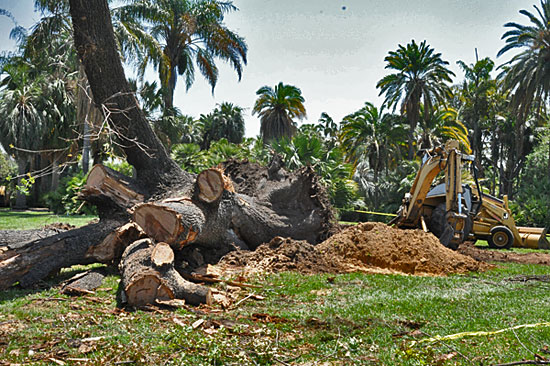
A century-old oak at the Huntington succumbed to the polyphagous shot hole borer and was removed in May. Photo/Maxx Echt
Posted 11/28/12
A plethora of philanthropy
November 28, 2012
If you’re looking for a chance to give back, this weekend offers a rich array of opportunities—from serving up a feast to shopping for a cause. Here are some of the possibilities for volunteering, fundraising and donating your way into a fulfilling 2012 holiday season.
Heroes welcome
The 20th Annual Veterans Holiday Celebration will be held at the West Los Angeles VA Campus from 12:30 p.m. to 5 p.m. on Sunday, December 2. Donate or join an army of about 650 volunteers who will feed, serve and entertain about 3,500 veterans. Volunteers will be needed for the day of the event and for set-up on Saturday, December 1.
Calling young environmental activists
Heal the Bay’s “A Day Without a Bag” Youth Summit will train high school students and college-aged young adults to organize campaigns to get people to ditch single-use plastic bags for a day. The summit takes place in Hollywood on Saturday, December 1 from 12 p.m. to 5 p.m. (A Day Without a Bag is December 20.)
Helping kids read
“Let’s Read!” offers one-on-one tutoring in reading, writing and other skills to kids who have limited access to educational resources. This Saturday, December 1, the group will set up shop in West Los Angeles. Volunteers are being recruited for commitments of a minimum of three Saturdays.
A really big giveaway
It takes a lot of helping hands to distribute 85,000 clothing items and children’s books to 5,000 folks in need. National Council of Jewish Women is seeking hundreds of volunteers to help do just that at their annual Community Resource Fair in the Fairfax district this Sunday, December 2, from 6:45 a.m. to 1:15 p.m. Volunteers are needed for the day of the event and on Saturday, December 1, to prepare. If you can’t make it out, the organization has a list of other ways you can pitch in.
A stylish benefit to feed the sick
Divine Design bills itself as the largest charity shopping event on the West Coast. The fashion festival in Beverly Hills benefits Project Angel Food, a nonprofit organization that delivers 13,000 meals per week to people with life-threatening illnesses like cancer and AIDS. The merchandise is donated by designers and companies. Volunteers are needed to set up, manage and clean up for the event, which runs from Thursday, November 29 to Sunday, December 3. Volunteers will receive a free day pass to shop and a free T-shirt.
The redcoats are coming
You’ve done charity walks before, but have you ever done one… as Santa!? Suits will be provided for the 2012 Santa Walk at the Westfield Topanga Mall, a walk that benefits Variety, a nonprofit organization that raises funds to provide support for disabled, abused, physically-challenged and underprivileged kids. The walk takes place Sunday, December 2, from 9 a.m. to 12 p.m. Register to raise funds and walk yourself or donate to support someone else’s day in the life of The Man in Red.
Posted 11/28/12
After turkey, taste L.A.’s latest
November 19, 2012
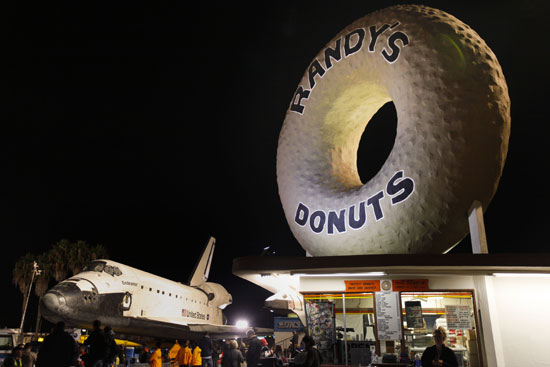
Two L.A. icons passed in the night, as the space shuttle Endeavor made its way to the California Science Center.
Once Thanksgiving dinner has been eaten, the leftovers packaged and all the tryptophan-induced post-dinner naps taken, you’ll realize there are still three days of holiday weekend left on your plate. Whether you’re hosting out-of-towners or just looking to explore, it’s the perfect time to see what’s new around town. Some pretty big things have been happening in Los Angeles County this year. Let’s start with a space shuttle:
Endeavour to the California Science Center
This one’s so huge it had to be flown in piggyback-style on a specially designed NASA aircraft. The decommissioned space shuttle Endeavour reached to its final resting place at California Science Center on October 14, where it is now on display. If you go to see it, you should also catch Cleopatra: The Exhibit, which features the largest collection of Cleopatra-era Egyptian artifacts ever displayed in the United States. It wraps up its 7-month stint at the center on December 31.
All aboard Expo
You can get to the Science Center by taking advantage of another L.A. newcomer—Metro’s Expo Line, the first modern passenger rail line to connect downtown and the Westside. (The line currently extends to Culver City. Phase 2 of the line, slated for completion in 2016, will extend all the way to Santa Monica.)
In addition to the Science Center, the line serves major landmarks like the Staples Center, the L.A. Coliseum, ExpositionPark and Natural History Museum. There are plenty of homegrown culinary destinations, too, if you want to add some variety to the regimen of Thanksgiving leftovers. See Metro’s handy list for other destinations and attractions.
“The Rock” and more at LACMA
Michael Heizer’s “Levitated Mass” art installation was the talk of the town this past summer before it was even installed. Its centerpiece 340-ton boulder drew crowds of onlookers as it inched its way through the streets towards the Los Angeles County Museum of Art. It took a herculean effort to get it there—it’s not going anywhere fast. While you’re there, you can check out two exhibits that won’t be around forever—one on Robert Mapplethorpe’s photography and another featuring the art of director Stanley Kubrick.
A day in the park
It’s been a good year for parks, so there’s more reason than ever this year to get out and exercise the gravy out of your system. Grand Park made its debut in October, giving Angelenos a new place to relax and play outside. Go for a stroll, experience the diverse programing presented there or kick back and watch the remodeled fountain from one of the park’s striking, movable hot pink seats.
Elsewhere, the Santa Monica Mountains wilderness area got a new visitors center at King Gillette Ranch, while El Cariso Park in Sylmar just opened a community center and gymnasium.
Blazing new paths
Parks aren’t the only places to burn calories. When Metro’s Orange Line Extension to Chatsworth opened in June, four miles of bike path opened with it, giving a big boost to local bike infrastructure and drawing cheers from L.A.’s fast-growing cycle culture. More bikeway was added along the L.A. River this year, too, and passage of the county Bicycle Master Plan means the region will be getting more bike-friendly in the future. For walkers, there’s a new section of greenway to explore in the San Fernando Valley.
The Science Center, LACMA and the Natural History Museum are all closed on Thanksgiving Day, November 22, but will be open during normal hours for the rest of the weekend.
By getting out and staying active this Thanksgiving weekend, you can help make sure the next “big thing” in L.A. isn’t you.
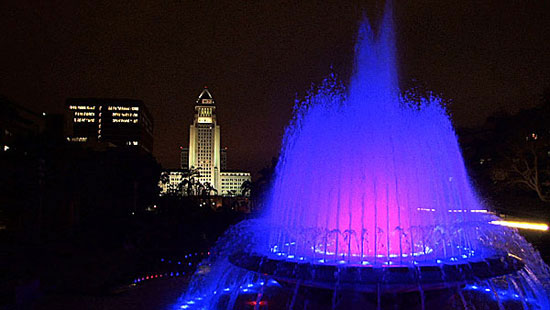
The Arthur J. Will Memorial Fountain was restored, lit and enhanced as part of downtown's new Grand Park.
Posted 11/19/12




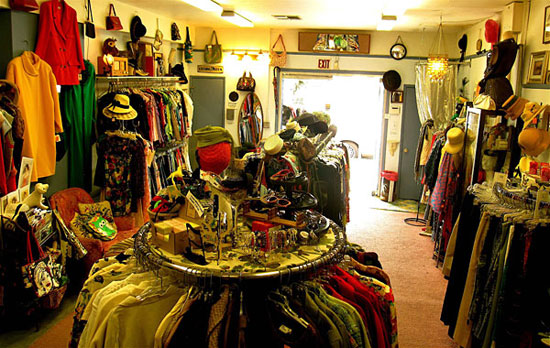
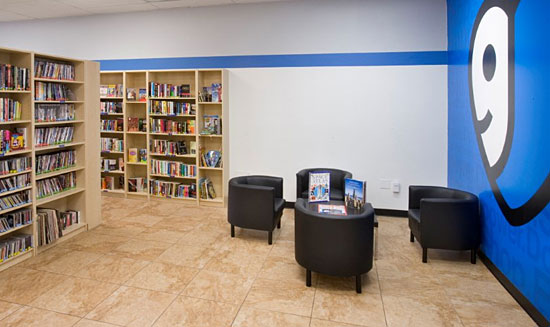
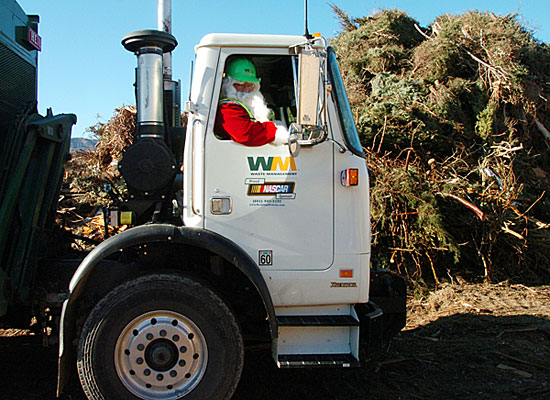
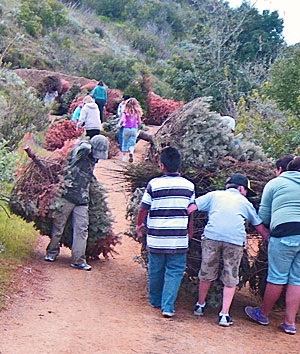
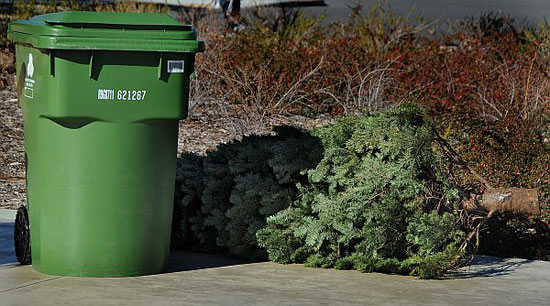
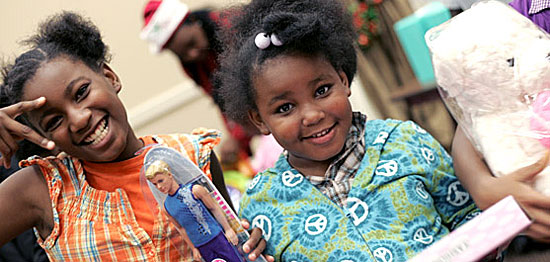
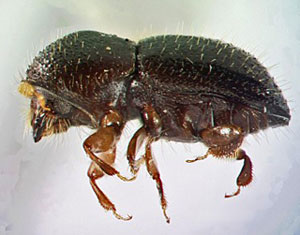
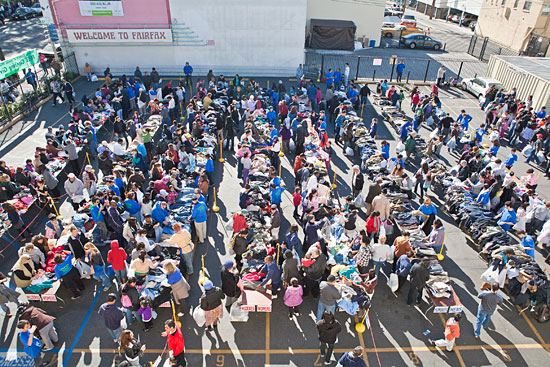
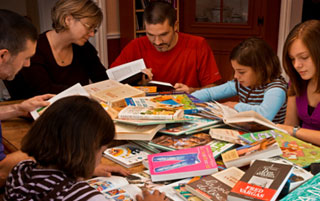
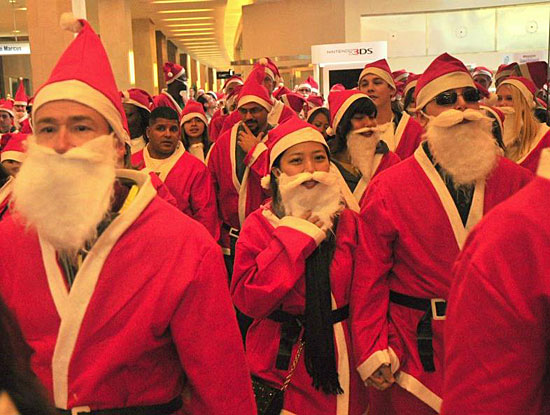





 Check for the latest closure information
Check for the latest closure information








